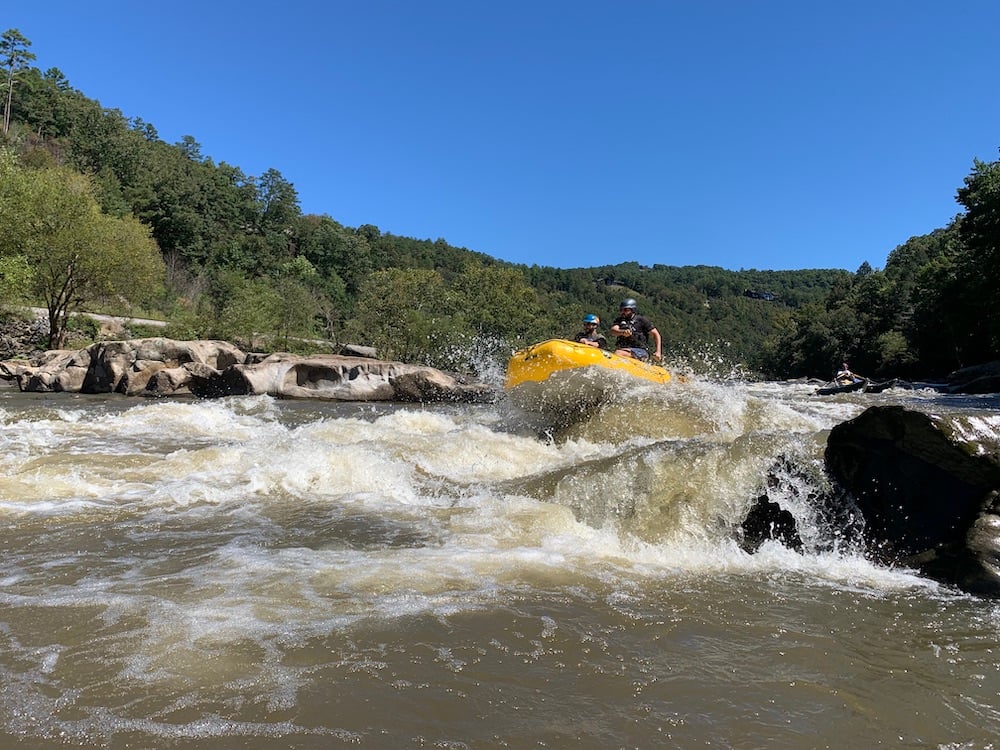
Nantahala Pisgah Forest Plan Released, Improvements Sought (NC)
American Whitewater has been actively working on the new Nantahala-Pisgah National Forest’s management plan for almost a decade. The plan covers 1.1 million acres of public lands in Western North Carolina and some of the finest whitewater paddling anywhere. Our goals for the new plan were to increase river protections, improve recreational management, and build broad support for future Congressional Wild and Scenic River designations. Along the way we made a lot of friends, including many Forest Service staff and all the members of the collaborative brain-trust that is the Nantahala Pisgah Forest Partnership. The new forest plan was released in late January, and it includes both triumphs and disappointments for river enthusiasts. Earlier this week, American Whitewater filed two pre-decisional appeals (called objections) of the proposed Forest Plan.
Eligible Wild and Scenic Rivers: Big Wins and a Couple Disappointments
The bulk of American Whitewater’s efforts were spent building support and evidence for increases in the number of rivers receiving interim protection in the plan by having them deemed eligible for Wild and Scenic designation. Eligible rivers are managed to protect their special values that could one day lead to permanent designation by Congress. The old plan had 10 eligible streams, we sought 30 with the Partnership, and the new plan has 18. This is a big conservation win for whitewater rivers, and each of the 8 new streams are truly deserving! The newly protected streams are:
-
- - Cullasaja River
- - Fires Creek
- - Flat Laurel Creek
- - Santeetlah Creek
- - South Toe River
- - Thompson River
- - West Fork Pigeon River
- - Whitewater River
The Forest Service also chose not to protect a few very deserving rivers, which is deeply disappointing and based on the Forest Service’s apparent lack of understanding of paddling, the rivers, and policy. Prime examples are the North Fork of the French Broad and the Upper Tuckasegee and its tributaries flowing out of Panthertown Valley, which we asked them to reconsider in an objection.
Sustainable Recreation: Mixed Results
The Forest Service has a mandate to provide for sustainable recreation, and the new plan does so selectively. Their treatment of trails and emphasis on habitat for game animals for example may bode well for hikers, bikers, and hunters. Their treatment of climbing and paddling is less welcoming. They have decided to continue their severe limits on paddling the upper Chattooga River even though 10 years of data shows very low use and no problems. We filed an objection on this topic. They rejected simple requests to consider river recreation when designing stream restoration and bridge projects. And some of their Wild and Scenic analysis shows a lack of understanding and value placed on whitewater paddling.
Missed Opportunities For Getting More Done
American Whitewater views the recommendations of the Nantahala Pisgah Forest Partnership as all about getting more good stuff done on the Forest in the right places, in the right ways, and with minimal conflict. One key innovation was the map: American Whitewater helped produce a proposed map of “Management Areas” that indicate where active management (for example, timber harvest) or passive management (for example, allowing old growth to keep growing) is more broadly acceptable. The map and many other key innovations to reduce conflict and do great work were not included in the new plan by the Forest Service, and the expectation is that the new plan will foment unnecessary conflicts over everything from where to do timber harvest, to whether forms of recreation will be prohibited in certain places. We hope this changes during the objection process.
The Future is Bright
The new Forest Plan for the Nantahala Pisgah National Forest is certainly not all bad, and we hope that through the objection process the public can help make it much better. We’ll spend the next few months working through the objection process which will likely include hearings and some additional dialog with the Forest Service and our partners. Sometime in June the Final Plan will be signed and we’ll get to work on implementing it. American Whitewater played an important role in securing historic federal funding for recreation infrastructure and restoration work like dam removals in the past few years, and the Forest Service now has a great opportunity to spruce up and shore up their roads, trails, parking, and campgrounds. American Whitewater will keep working with the Nantahala Pisgah Forest Partnership and the Forest Service to drive this funding to projects that are good for rivers, and to support restoration projects like dam removals, water quality improvements, and forest restoration. And we’ll be working with communities to pursue Wild and Scenic River designations in the area based on the broad support garnered throughout the forest planning process.
